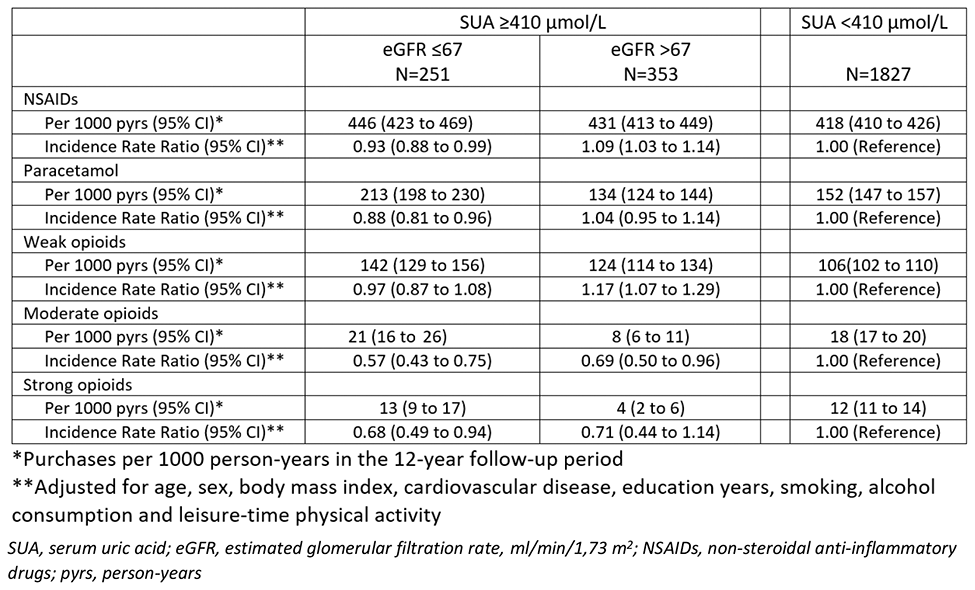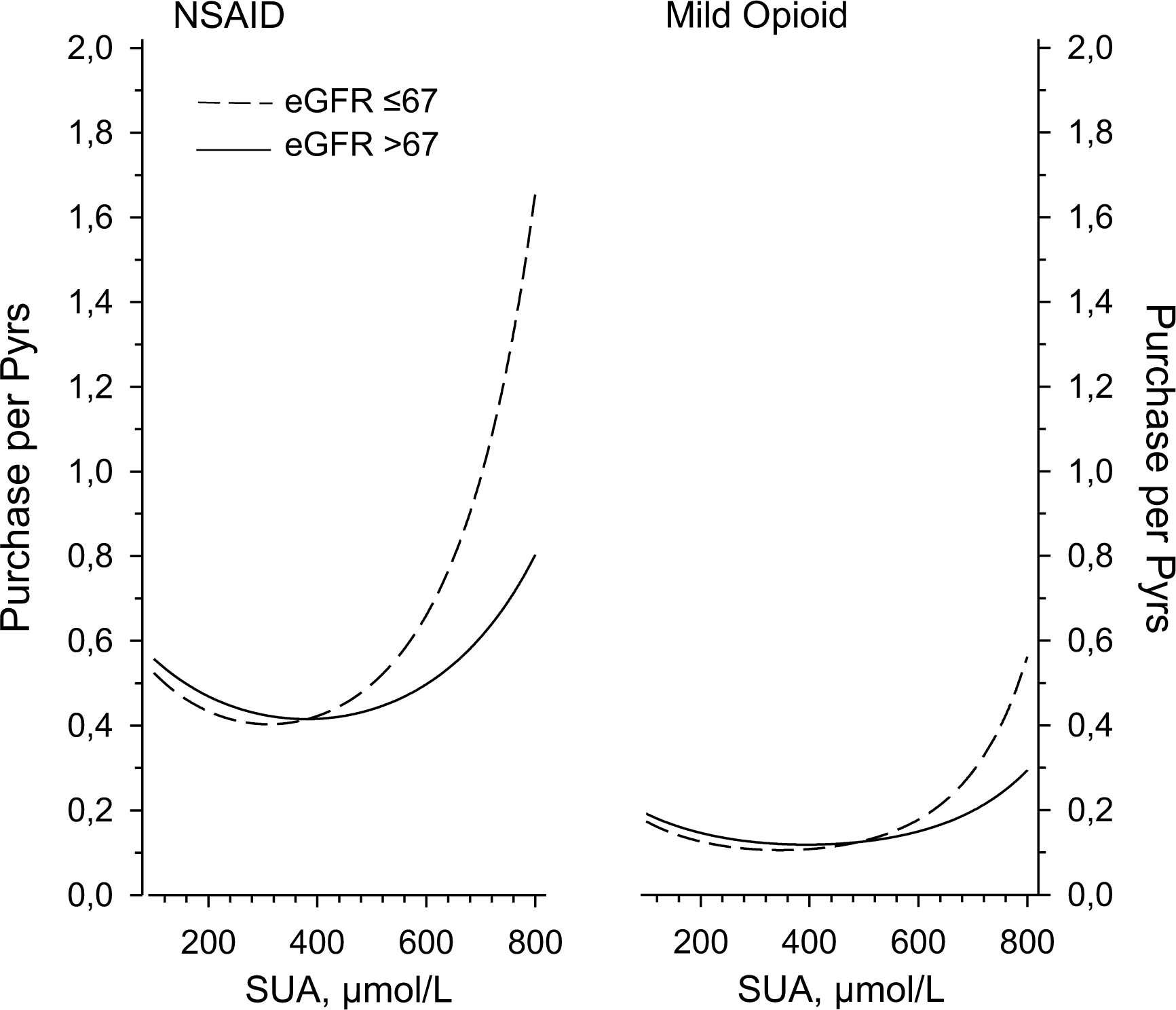

Background: Gout is a crystal deposition disorder that leads to extremely painful joint inflammation. Its mandatory precursor - hyperuricaemia - is associated with musculoskeletal pain even in the absence of gout attacks.[1,2] The utilization of different types of analgesics in hyperuricaemia patients has however not been previously studied.
Objectives: To detect the usage of non-opioid and opioid analgesics in normo- and hyperuricaemic individuals.
Methods: We utilized data from the GOAL ( GO od A geing in L ahti region) study, a prospective investigation involving individuals aged 52–76 years from the Lahti region of Finland. Information on serum uric acid (SUA) levels, along with various other laboratory parameters, comorbidities, medication usage, lifestyle choices, and socioeconomic factors, was gathered. The glomerular filtration rate was estimated using the CKD-EPI creatinine-cystatin C equation (ml/min/1.73 m 2 ). Individuals with SUA values exceeding 410 μmol/L (75 th percentile) were identified as hyperuricaemic, while those with an estimated glomerular filtration rate (eGFR) of 67 ml/min or lower (25 th percentile) were classified as having diminished kidney function. The information on purchases of prescription analgesics was gathered from the Social Insurance Institution of Finland register. The results of incidence rate ratio (IRR) for purchases of analgesics in 12-year follow-up period were adjusted for age, gender, education, smoking status, alcohol consumption, body mass index, hypertension and dyslipidaemia.
Results: The incidence of purchases per person-year for non-steroidal anti-inflammatory drugs (NSAIDs), paracetamol, and opioids in persons with renal hyperuricaemia (elevated SUA in the presence of reduced kidney function), metabolic hyperuricaemia (elevated SUA with normal kidney function) and normal SUA levels are demonstrated in Table 1. In comparison to normouricaemic individuals, the adjusted IRR for analgesic purchases was higher in persons with metabolic hyperuricaemia for NSAIDs and mild opioids, while it was lower in persons with renal hyperuricaemia for NSAIDs and paracetamol. For moderate and strong opioids, the adjusted IRR was lower in both hyperuricaemia groups. The purchases per person-year for both NSAIDs and mild opioids increased with higher SUA levels, particularly in individuals with reduced renal function, as depicted in Figure 1.
Conclusion: Elevated SUA levels appear to exert an influence on an individual’s need for analgesics. Even in the absence of gout attacks, heightened SUA levels likely contribute to more frequent or intense pain situations, thereby increasing the demand for pain relief. Additionally, impaired renal function appears to amplify the necessity for analgesics. In our study population hyperuricaemic individuals with normal renal function used more NSAIDS and weak opioids than persons with normal SUA levels. It is imperative to provide hyperuricaemic individuals with reliable medical advice regarding the safe and effective use of pain relievers. Furthermore, future studies should be conducted to ascertain whether reducing SUA levels in hyperuricaemic individuals without gout attacks would lead to a decrease in their need for analgesics.
REFERENCES: [1] Comberg HU, Schach S. Open Pain J . 2016;9:15–25.
[2] Jonsson H, et al. PLoS One . 2019 Aug 23;14(8):e0221474.
Acknowledgements: NIL.
Disclosure of Interests: None declared.
: Table 1. Purchases of different types of analgesics in persons with renal hyperuricaemia, metabolic hyperuricaemia and normouricaemia.

Relationship between SUA level and number of purchases of an analgesic per person years in subjects with eGFR of ≤67 and in subjects with eGFR of >67.
SUA, serum uric acid; eGFR, estimated glomerular filtration rate, ml/min/1,73 m 2 ; NSAID, non-steroidal anti-inflammatory drug; pyrs, person-years
